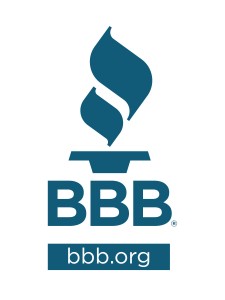 One extremely important element of a successful business is the relationship you have with customers. In order to build that relationship, you need to connect with them on a somewhat personal level, and the best way to do that is by asking questions. Even more important, however, is learning how to ask the right questions. Asking effective questions leads to better relationships, which in turn leads to increased sales. Here are some suggestions for refining what types of questions you ask your prospects.
One extremely important element of a successful business is the relationship you have with customers. In order to build that relationship, you need to connect with them on a somewhat personal level, and the best way to do that is by asking questions. Even more important, however, is learning how to ask the right questions. Asking effective questions leads to better relationships, which in turn leads to increased sales. Here are some suggestions for refining what types of questions you ask your prospects.
- Ask questions that will give you insight into the person’s particular situation. Customers may already have an idea of what they need or want, but they may also require and even be in search of some guidance to help them find the best product or service to suit their circumstances. For example, a woman comes into your retail accessory shop looking for a new bag. “What do you like or dislike about your current bag? What role does your bag play in your typical day? What do you mainly use it for?” These are questions that get the person really thinking about his or her needs/wants, as well as talking about her life. Once you can get a prospect to share something personal, you have made a connection on which a relationship can be built. The more information you have, the better the chance you have of closing the sale.
- Ask what problem needs solving. Remember that you are a solution-finder for your customers. Whether the person wants to satisfy a want or a need, there is most likely something missing in his or her life, however major or minor it may be. Once you find out this information, you can offer your expertise to present the customer with an option that solves the problem.
- Ask for a commitment to meet. Depending on your type of business, it may be appropriate to schedule a follow-up meeting or phone call. Some people tend to be vague and give broad answers when asked when a good time would be to call. If the person says, “Any time is fine,” follow that up with, “Is Tuesday at 2 a good time?” Then confirm the day before if the meeting is scheduled a week or more in advance.
- Ask for a referral. This doesn’t just mean asking customers who have actually patronized your business. Even if a prospect says no, if you are confident that you can truly be of service to someone else, take the initiative to ask for a referral. This will increase your network and your chances of landing more sales.
- Ask them to elaborate on hesitations or concerns. Even the smallest of purchases comes with some level of risk. If a prospect says, “I’m just not sure I want this right now.” Ask the person to clarify what exactly is holding him or her back. When you have a high quality product or service, most times those fears can be alleviated with your honest word and strong guarantee, especially if you are extremely knowledgeable about what you are selling.
Remember, you have everything to gain and very little to lose by digging a little deeper and asking certain types of questions. What else can you add to our list? Please share your comments below!
 Free e-book “Business Owner’s Road Map to Success.” It has over 50 pages of techniques for everything a small business owner needs to master, from business planning and ethical selling to a success mindset. It’s all there and it’s free for you. To get it, just “Like” our Facebook Page here: http://on.fb.me/KsIN6P Pass it on!
Free e-book “Business Owner’s Road Map to Success.” It has over 50 pages of techniques for everything a small business owner needs to master, from business planning and ethical selling to a success mindset. It’s all there and it’s free for you. To get it, just “Like” our Facebook Page here: http://on.fb.me/KsIN6P Pass it on!








![MP900178801[1]](https://dsef.org/wp-content/uploads/2011/11/MP9001788011-201x300.jpg)


![MP900321197[1]](https://dsef.org/wp-content/uploads/2011/09/MP9003211971-214x300.jpg)

![MP900386276[1]](https://dsef.org/wp-content/uploads/2011/10/MP9003862761-300x199.jpg)
